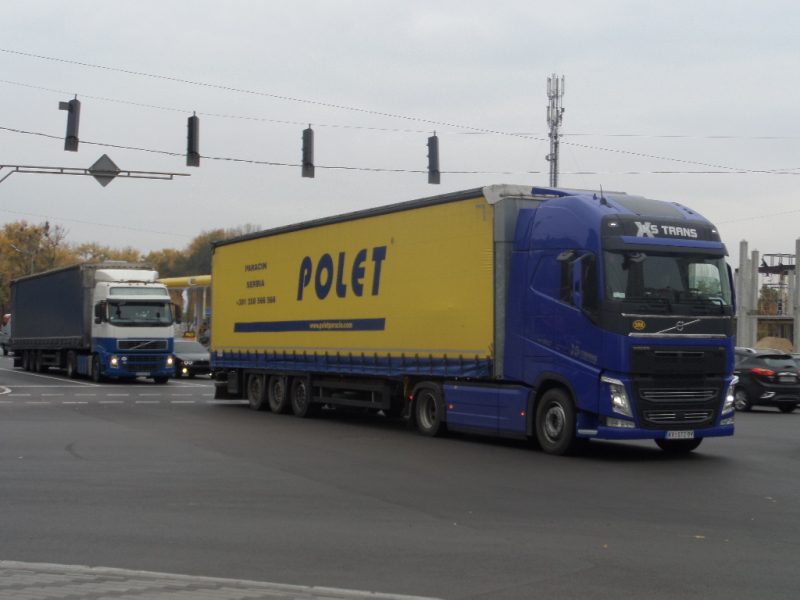
Toyota Yaris 1.3 VVT-i Left
Firstly, the modified bumpers and headlights are noticeable. One of the more highly anticipated innovations is the bumper protectors that protect the front and rear of the vehicle from unwanted scratches. And be careful! Unpainted and therefore less scratch-sensitive safety frames are only available on less equipped equipment packages (Terra and Luna), while the richest Sol package, which was also equipped with a test car, is painted in the color of the vehicle, which is why they were this as vulnerable to scratches as before.
Another already mentioned change is the headlights, each of which gets a “tear”. At first one might think that a muted or long beam of headlights was inserted into these slots, but it turns out that only the side light is installed in them. As a result, the headlamps are still "single-optic" (one lamp for both beams of light) and thus still offer the possibility of an improvement by switching to dual optical technology. When you add 15-inch alloy wheels to the body changes that are part of the standard equipment on the Sol package, the result is an even younger and more attractive look than before.
The changes are visible inside too. There, all the switches remain in the same places as before, except that their image has changed. Thus, Toyota has transformed the current oval and round shape into a more angular and rectangular one. This is in no way a concern as the dashboard, combined with the silver color (again part of the Sol equipment) on the center console and interior door handles, looks pleasant and comfortable for passengers. They have also improved the rear bench seat, which, in addition to being able to increase and adjust the luggage compartment, can now be adjusted by reclining the backrest, which is divided by a third.
The Yaris performed well in pre-overhaul tests. To keep these results excellent, they also took care of a reinforced body structure, new side airbags in the front seats (until they were available) and a three-point seat belt in the rear seats, which until now has only been a two-point seat belt.
Changes in the subcutaneous technique are also hidden. Toyota says that with minor tweaks to the suspension settings, it has improved damping and bump and position control, but reduced driving comfort. Namely, when driving on highways, the car pays more attention to road waves, and even when driving slowly around the city, the chassis "more successfully" conveys road irregularities to passengers. It is true, however, that the position of the Yaris has improved due to the decrease in comfort. Thus, due to the increased strength of the chassis and, of course, the wider and lower 15-inch shoes, the driver feels more stable when cornering and also has better steering response.
Among the updated or modified elements of the car is the 1-liter four-cylinder engine, which is based on the smaller liter four-cylinder engine. It also boasts VVT-i technology, lightweight construction and four-valve technology. On paper, from a technical point of view, it runs almost exactly the same engine with slightly modified ratings. They announce a power increase of one kilowatt (now 3 kW / 64 hp) and a loss of two Newton-meters of torque (now 87 Nm). But don't worry.
Changes while driving are also not noticeable when you switch from the old Yaris to the new one and compare them with each other. On the road, both the old and the new bike are equally bouncy and responsive. However, environmentalists will have a big smile on their faces as they have further improved the engine, which now has a much lower impact on the environment. According to European standards for the purity of exhaust gases, it meets the requirements of Euro 4, while the old 1.3 VVT-i unit met “only” the Euro 3 standards.
Thus, from the above it is more than obvious that the Toyota Yaris was not made completely new, but only refurbished. Today it is an established practice in the automotive world. After all, even the competition never stops.
So, is the new Yaris a good buy or not? Compared to the previous model, prices have increased by several tens of thousands of tolars, but the equipment has also become richer. And when you consider that the price includes hitherto unavailable pieces of equipment (side airbags, five three-point seat belts), then the updated Yaris is a reasonable purchase for a modern adult small city car.
Peter Humar
Photo: Sasha Kapetanovich.
Toyota Yaris 1.3 VVT-i Left
Basic data
| Sales: | Toyota Adria Ltd. |
|---|---|
| Base model price: | 10.988,16 € |
| Test model cost: | 10.988,16 € |
| Calculate the cost of auto insurance | |
| Power: | 64kW (87 KM) |
| Acceleration (0-100 km / h): | 12,1 with |
| Maximum speed: | 175 km / h |
| Mixed flow ECE: | 5,6l / 100km |
Technical information
| engine: | 4-cylinder - in-line - petrol - 1298 cm3 - 64 kW (87 hp) - 122 Nm |
|---|
We praise and reproach
appearance
engine
position and appeal
internal flexibility
3D sensors
driving comfort
steering wheel is not adjustable after departure
"Scattered" radio switches

